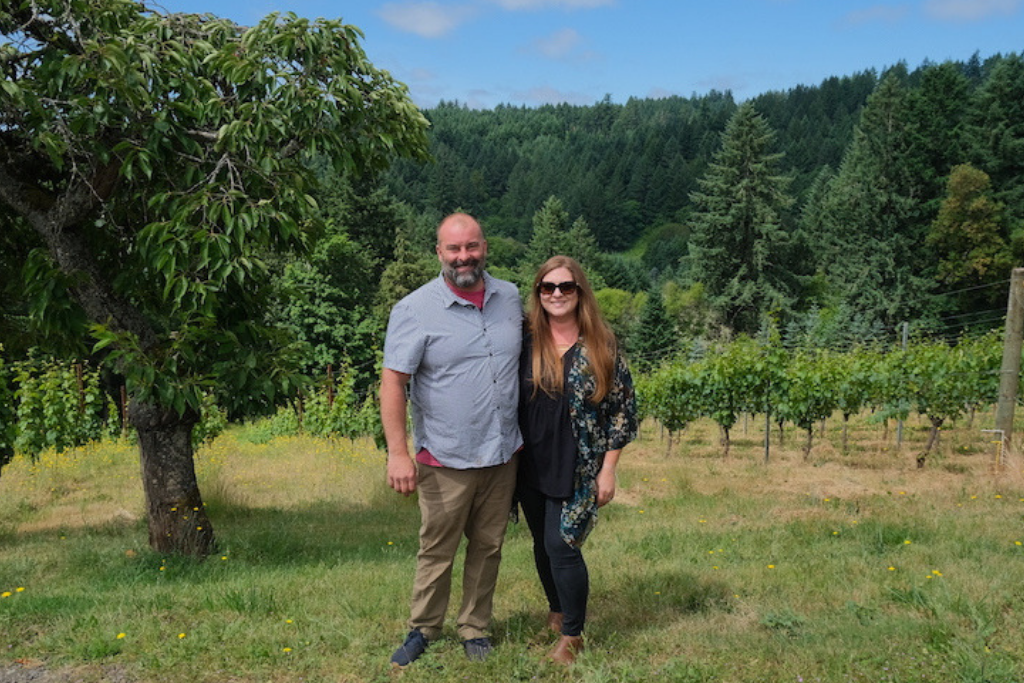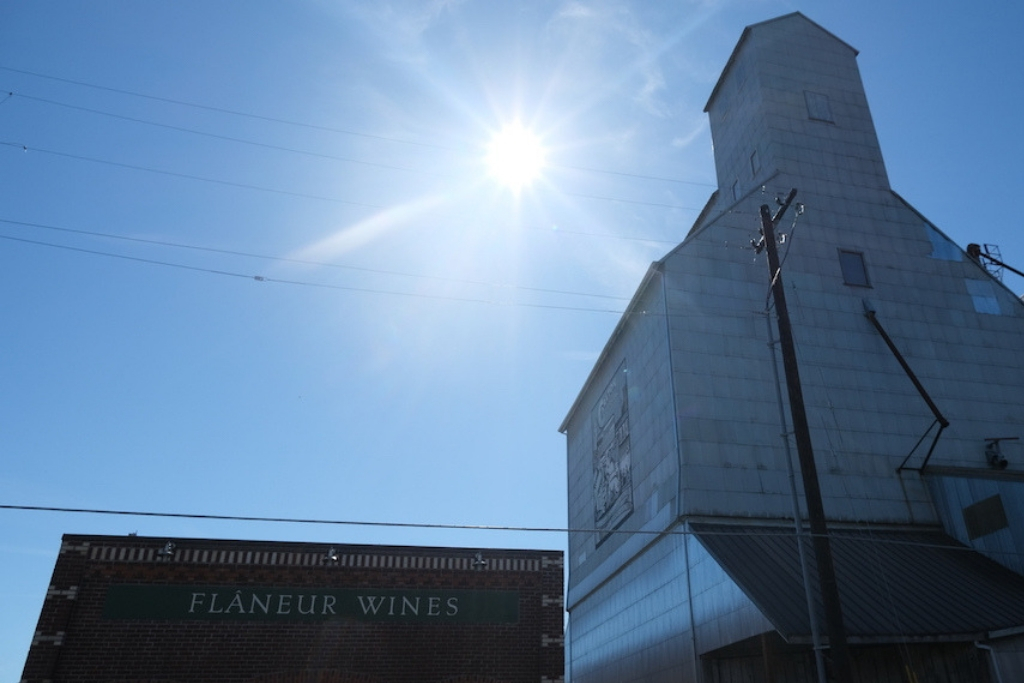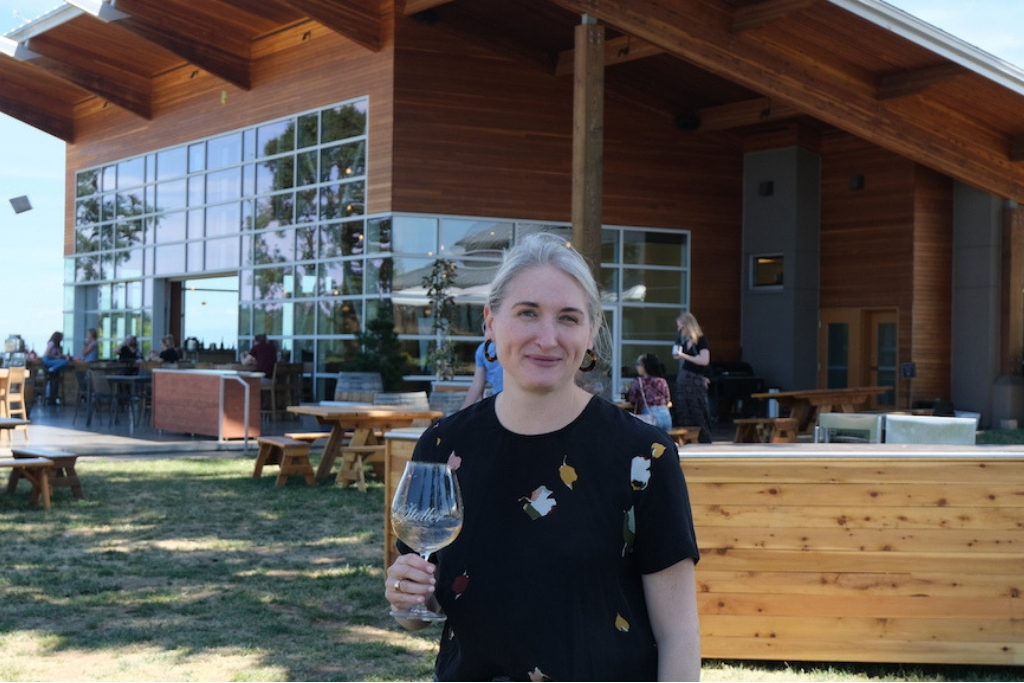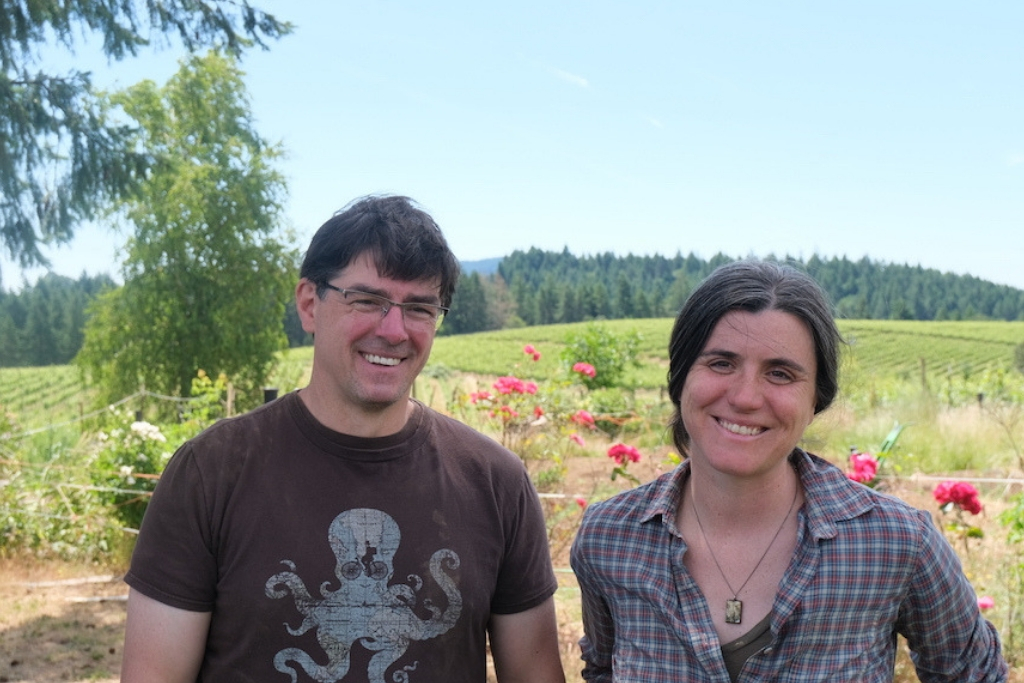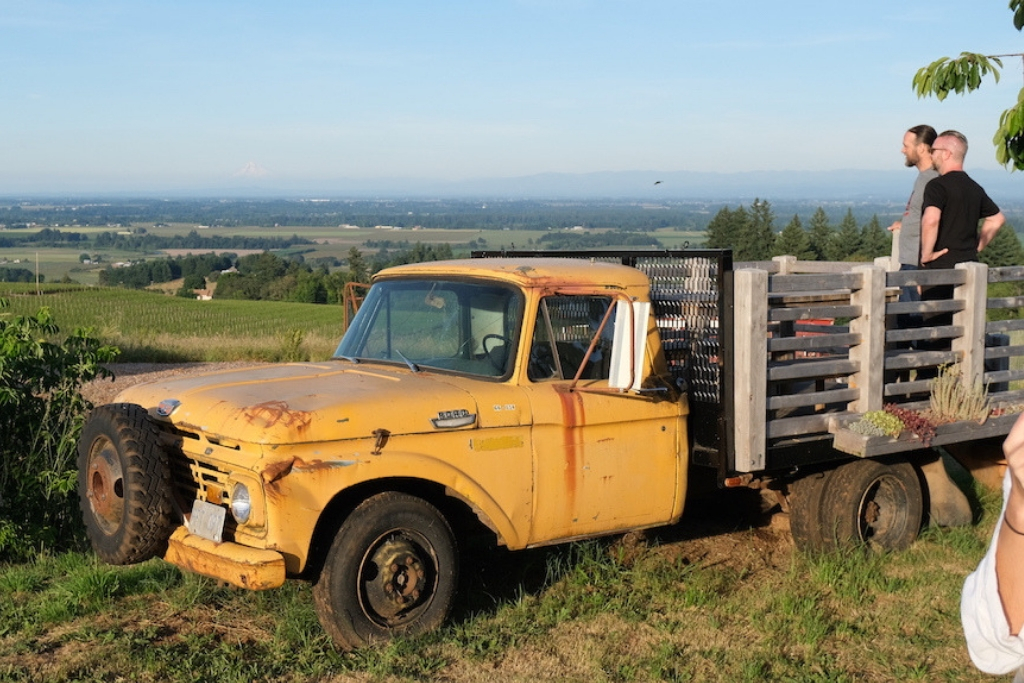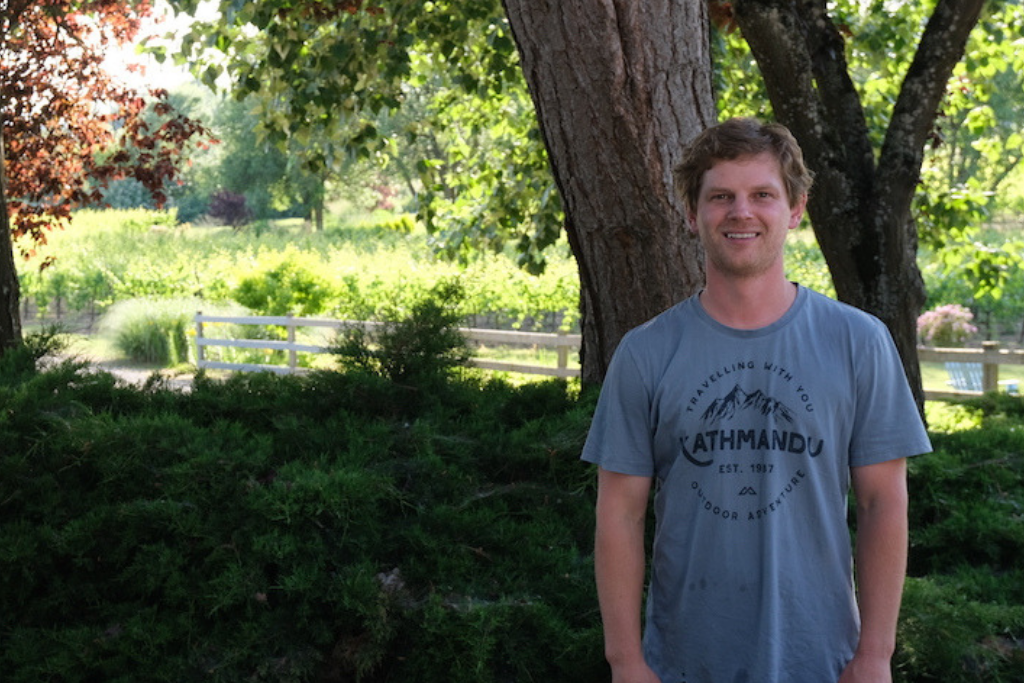PINOT PALOOZA:
I found it really interesting the conversations we were having in relation to obviously the different colors of the amphora. Can you maybe tell us a little bit about what does that mean? What does that equate to?
Andrew Beckham:
Yeah, so we’re interested in exploring what we can tease out of the amphora and part of that has to do with the shape of the containers, but largely it has to do with the temperature they’re fired at, and which clay composition we’re using. So I’m working with about 120 degree temperature spectrum, where we have pots at the low end that have wines that are more oxidative in nature. There’s more oxygen in an exchange between gases and atmospheres in those lower temperature fired pots up to the pots that are fired at the point where they’re vitrified where the silica in the clay has fused into a single mass. And the wines coming from those containers are much more reductive in nature. So in that spectrum we can create nuanced characteristics as if we were using barrels for example, but not they’re terracotta.
PINOT PALOOZA:
Just to explain a little bit for layman’s terms in terms of when you talk about that silica in the clay, why is that… why is that important? And why at the hotter temperature, does it create a more reductive environment?
Andrew Beckham:
Yeah, so the silica is glass and when we heat to a specific temperature, when we get to the temperature where the glass becomes vitrified, that means that it’s fused into a single mass and it’s like a demijohn. So when we heat to that point, there is no porosity left in the container. And from that point moving down, we can create more and more progressively oxidative environments until we reached the point where the containers are not viable and it weeps and leaks. So there is a fine line where you reach a fail point. Both on the high end and the and the low end. If you fire too hot, the containers melt and turn into a puddle
PINOT PALOOZA:
So maybe tell us like the big beautiful kiln that we saw and we’ve got? Maybe tell us a little bit about that and how did you get that kiln.
Andrew Beckham:
Yeah. So the kiln we just installed came from Minot, North Dakota. It was built in Amsterdam and it was just a fortuitous thing. Someone told us that they’d seen an ad over a year ago that was now expired and had saved the contact information and I called the woman and flew out to North Dakota and three months later we have it running. It was incredibly complicated and involved bringing technician here from Amsterdam to install it. But this kiln moves air, it’s a forced induction kiln and it is… it’s allowing us to create a better quality product more efficiently.
PINOT PALOOZA:
And it’s amazing, you do all, you make all of these onsite?
Andrew Beckham:
Yes, that’s correct. Yeah. We make, make the amphora here. I have about 70 of them, maybe 80 that we use in our wine production and we’re now starting to provide them to brewers and winemakers in spirit makers, not only in the Pacific Northwest but across the United States.
PINOT PALOOZA:
That’s amazing. And how long does it take, say from absolute start to finish, how long does that process take?
Andrew Beckham:
It takes about two months. If someone were to call tomorrow and say they were interested in a novum for this coming vintage, it’s about a 60 day duration to go through the forming and drawing and firing process.
PINOT PALOOZA:
So it’s a… it’s a long handcraft time and each one is so incredibly beautiful and individual like it is that they’re… they’re absolutely beautiful and stunning. They are pieces of artwork.
Just very quickly to talk about the pinot. How do you sort of describe the wines from, you know, from this particular area of Oregon. How do you characterize them?
Andrew Beckham:
Well, I think in our particular situation, we’re lucky that we’re higher elevation than some of our pinot growing neighbors. And we have very shallow, rocky soils with a big diurnal shift and lots of wind and we have a pH that tends to be fairly low. So we’re, you know, able to make wines that have good acidity without manipulation.


